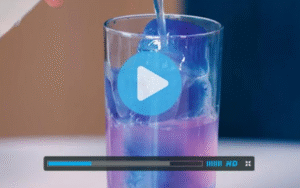Prostate health is one of the most important aspects of men’s wellness, especially as they age. The prostate, a small gland located below the bladder, can become enlarged or inflamed over time, leading to uncomfortable urinary symptoms and in some cases serious conditions like benign prostatic hyperplasia (BPH) or chronic prostatitis. While conventional medicine offers a range of treatments—from medications to minimally invasive procedures—many men are curious about natural alternatives.
Among the most popular natural supplements are saw palmetto and pygeum, two herbal remedies that have been used for centuries to support urinary and prostate health. But should you rely on these herbs? Are they really effective, and what do doctors say about their benefits and limitations?
This article will explore the science behind saw palmetto and pygeum, their potential pros and cons, and what medical professionals recommend when it comes to herbal remedies for prostate health.
Why Herbal Remedies Are Popular for Prostate Health
Before diving into specific herbs, it’s important to understand why so many men turn to natural solutions:
- Desire for fewer side effects – Many prescription medications for BPH can cause issues like dizziness, reduced libido, or erectile dysfunction. Herbal supplements are often seen as gentler alternatives.
- Traditional use – Herbal remedies like saw palmetto berries and pygeum bark extracts have been used for generations to relieve urinary problems.
- Accessibility – Over-the-counter supplements are easy to find online or in local stores.
- Preventive approach – Some men take herbs proactively to maintain prostate health even before symptoms appear.
However, just because a remedy is “natural” does not always mean it is effective or safe for everyone. This is where medical evidence and expert advice matter most.
Saw Palmetto: The Most Popular Herbal Remedy
Saw palmetto (Serenoa repens) is a small palm plant native to the southeastern United States. Its berries have been used in traditional medicine for urinary and reproductive issues. Today, it is one of the most widely marketed herbal remedies for prostate health.
How Saw Palmetto Works
The active compounds in saw palmetto are thought to:
- Block the enzyme 5-alpha-reductase, which converts testosterone into dihydrotestosterone (DHT), a hormone linked to prostate enlargement.
- Reduce inflammation in the urinary tract.
- Improve urinary flow and decrease nighttime urination.
Potential Benefits
- Some studies suggest saw palmetto may reduce urinary frequency and improve flow in men with mild to moderate BPH.
- It may provide relief without the sexual side effects often associated with prescription drugs.
- Often used as a complementary therapy alongside other treatments.
Limitations and Concerns
- Clinical studies show mixed results—some find real benefits, while others show no significant difference compared to placebo.
- The effectiveness may vary depending on the supplement’s quality, dosage, and extraction method.
- Side effects are usually mild but can include stomach upset, headache, or dizziness.
What Doctors Say About Saw Palmetto
Doctors acknowledge that while saw palmetto is generally safe, its effectiveness is not consistently proven in large-scale clinical trials. Many urologists advise patients not to rely on it as a replacement for standard medical care, especially if symptoms are severe. However, some doctors may support its use as part of a holistic approach, provided the patient is monitored.
Pygeum: A Traditional African Remedy
Pygeum (Prunus africana) is derived from the bark of an African tree and has been used in traditional medicine for urinary disorders. It is less well-known than saw palmetto but has a long history of use in Europe and Africa.
How Pygeum Works
The bark extract contains compounds that:
- Reduce inflammation in the prostate.
- Improve bladder elasticity and emptying.
- Lower the levels of growth factors that contribute to prostate enlargement.
Potential Benefits
- Some studies show pygeum can improve urinary symptoms such as frequency, urgency, and nighttime urination.
- May improve overall quality of life in men with mild BPH symptoms.
- Often used in combination with other herbal extracts for greater effect.
Limitations and Concerns
- More research is needed to confirm its long-term effectiveness.
- Supply is limited, and unsustainable harvesting of pygeum bark has raised ecological concerns.
- Side effects are rare but may include gastrointestinal discomfort.
What Doctors Say About Pygeum
Doctors consider pygeum to be a potentially useful herbal remedy, especially when combined with lifestyle changes. However, because high-quality clinical evidence is limited, most physicians recommend using it cautiously and as a complementary—not primary—treatment option.
Comparing Saw Palmetto and Pygeum
| Feature | Saw Palmetto | Pygeum |
|---|---|---|
| Origin | Native to U.S. | African tree bark |
| Mechanism | Blocks DHT, reduces inflammation | Improves bladder function, reduces inflammation |
| Evidence | Widely studied, mixed results | Moderate evidence, fewer studies |
| Side Effects | Mild (stomach upset, headache) | Rare (GI discomfort) |
| Doctor’s View | Safe but not a replacement for medical care | Promising but needs more research |
Pros and Cons of Herbal Remedies for Prostate Health
Pros
- Natural and widely available
- Generally safe with few side effects
- Can provide symptom relief for some men
- May be used alongside conventional treatments
Cons
- Inconsistent scientific evidence
- Not regulated as strictly as prescription drugs, meaning supplement quality can vary
- May delay seeking effective medical treatment if relied upon exclusively
- Not effective for severe cases of BPH
Doctor Recommendations: The Bottom Line
Most doctors agree that herbal remedies like saw palmetto and pygeum can be safe complementary options for men with mild prostate symptoms, but they should not replace proven medical treatments. Key takeaways include:
- Always talk to your doctor before starting supplements, especially if you are already on medication.
- Choose high-quality products from reputable brands, since supplements are not strictly regulated.
- Use herbs as part of a broader strategy that includes regular checkups, a healthy diet, exercise, and appropriate medical care.
- If symptoms worsen, seek professional evaluation promptly—herbs alone will not resolve serious prostate problems.
Final Thoughts: Should You Use Herbal Remedies for Prostate Health?
Herbal remedies like saw palmetto and pygeum continue to attract interest from men seeking natural ways to support their prostate health. While some individuals report noticeable improvements, scientific studies remain mixed. Doctors generally recommend viewing these supplements as supportive aids rather than miracle cures.
If you’re considering herbal remedies, the best approach is to combine them with medical guidance and healthy lifestyle practices. That way, you can enjoy potential benefits while minimizing risks and ensuring your prostate health is properly monitored.
Your prostate health deserves proactive care—whether that comes from herbs, medications, or lifestyle changes, the important thing is to make informed decisions guided by both science and your doctor’s advice.
>> Click here now to find out the doctor-recommended prostate-shrinking mineral juice



